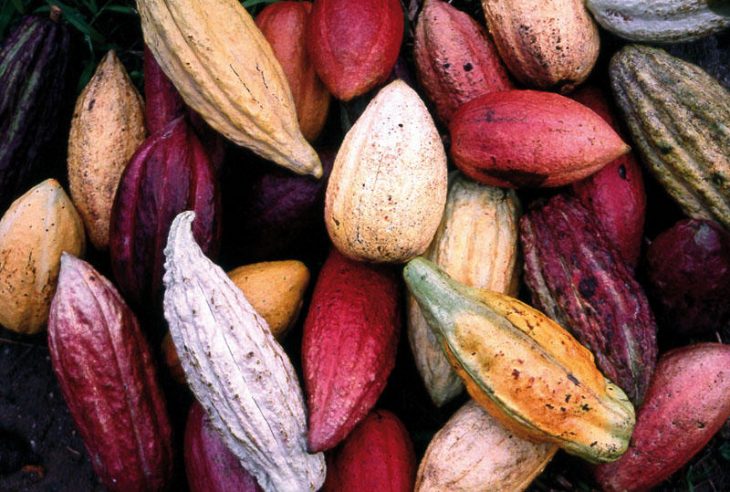Diseases have caused national production to plummet by 67 percent, says Alfonso Ramos Mancilla, treasurer of the National Union of Cocoa Producers.
The cocoa bean produced in Mexico is of the highest quality, as its strong aroma, its high fatty acid content, its characteristic acidity and flavor that provide the climate and soil conditions of the Mexican tropics, coupled with the fermentation and drying process which are used by Mexican producers, make it the best in the world.
But the downside is that … there is almost no production! Just as he read it. It is not worth having the best cocoa in the world in our country, if very little is produced, if you do not take advantage and make use of that plus, quality, with a good price.
THE CAUSES
The fall in national cocoa production began with the arrival of the diseases popularly known as “witch’s broom” and “black spot” that occurred in 1996, when there was a production of 34 thousand tons per year, but there were eight years later when the situation became even more complicated with the arrival of the plague called moniliasis, “which affected us a lot of production”, comments to Tierra Fertile, Alfonso Ramos Mancilla, treasurer of the National Union of Cocoa Producers.
He adds that currently about 11 thousand tons per year are obtained in the country (that is, production fell by 67.6%) and obviously that at the global level, Mexico is no longer number one, “in terms of quality, we are the number one, but in matters of quantity, because there is no comparison with what produces Ivory Coast, Malaysia, Brazil, Ecuador; we only account for two percent of world production. With that amount we can not even cover the demand of the national industry, “he emphasizes sadly.
ONE PIZCA IS PRODUCED ONLY
And to illustrate the distressing situation they are facing, he points out that “for example, one of our main customers needs 18 thousand tons for their annual consumption. So if we produce 11 thousand, we have a deficit with them, of 7 thousand tons, … and the other companies that make chocolate in our country are still missing ».
And he admits that they, the producers, were very much to blame, because although they were informed that the monilia was approaching Mexican lands, they did nothing to try to avoid damage like the one in the cacao plantations.
“We knew he was coming, but like good Mexicans, did not we? At the time we knew the news and did not do anything, we did not think we were going to get there,” he said sincerely.
TO LIVE WITH THE ENEMY
And when asked about what is done to attack it, it responds with a hint of resignation, that the fungus came to stay because the climatic conditions of the tropics are the ideal for its development.
But he says they do not stay with their hands crossed. He pointed out that the producers and the National Institute of Forestry, Agriculture and Livestock Research (INIFAP) carried out studies and brought moniliasis-tolerant cacao varieties, tested in countries that were also affected by this fungus, to renew the country’s cacao plantations.
“They are tolerant varieties, crossed with the Cacao Creole that is here like the calabacillo and developed five clones certified with which in the last 10 years have been repopulated hectares planted with cocoa in our state,” says Ramos Mancilla.
But he admits that until now only reconversion is slow, because other problems arise here, and he explains them.
OTHER FACTORS THAT MINUTE PRODUCTION
We have not been able to expand the spectrum of hectares, because we are struck by several phenomena in addition to the monilia and that affect us a lot like the aging of the producers and the division of land.
Regarding the first aspect, the official of the Union of Cocoa Producers of the country points out that “we have a sector of producers already quite old, with an average between 60 years of age, are already quite large, is the same and that affects production.
He points out that when a producer decides to withdraw from the activity, he also causes them another problem, which is the division of the land, and he explains it with the following example: “if the producer who has already yielded, decides to make the equitable distribution of their lands, therefore they will touch two hectares to each son. But if one of his children, in his two hectares that touched him decides to make his home and live there, there is already a decline, and will only be left with a hectare and a half or a hectare to grow cacao. So that also affects production. “



